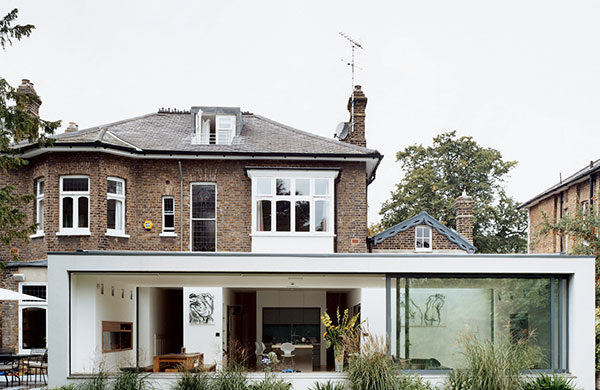
Flat roofs can strike fear in the hearts of many people but they have come a long way from the problematic, leak prone versions of the 1980s. Nowadays, a well designed and waterproofed flat roof should not cause problems or leak.
Flat roofs are not actually flat, they have a slight slope to allow rain water to drain off the roof. They are economical to construct and allow homeowners to maxamise the floor to ceiling height of their space.
One of the most common problems encountered with flat roofs is rainwater outlets becoming blocked with leaves. To help prevent this you should allow for more than one outlet to drain an area and provide leaf guards to all outlets. It’s wise to inspect your roof particularly in the autumn when there is a risk of leaves accumulating and clear them before an issue arises.
Poor workmanship is another source of problems with fat roofs. Before you employ a roofing contractor make sure that you check their references and engage an engineer, or architect, to specify, detail and inspect the work.
There are three main flat roof systems – rubber, fibreglass and torch on felt. But how do they compare?
The cheapest of the three options is the torch on felt roof. But this kind of finish does still carry a bad reputation from the older and now unused pour and roll systems of the past. The new versions are far more flexible and durable – three layers of felt are melt welded together with a large blowlamp or torch hence the name ‘ torch on felt’. The top layer is called a cap sheet which can either be a plain black bitumen finish, a solar reflective paint finish, or a mineral fleck finish which comes in a variety of colours.
Most guarantees are ten years, but a well installed torch-on felt roof could well last up to 30 years if looked after and treated well. Foot traffic in hot weather may scuff the surface of a mineral finish which can lead to U.V. damage by sunlight.
Rubber roofs have become very popular in recent years. A rubber roof can often be installed in one complete layer without the need for joins, depending on size. It is an extremely light weight, elastic and tough finish. A well installed rubber roof should last 30 years upwards. You should, expect to pay 20%-30% more than a torch-on roof.
It is a very durable finish and can be repaired easily, but repairs will be visible, as it normally involves gluing on patches a bit like an inner tube repair.
Fiberglass has been around for many years but has only gained popularity recently as a flat roof finish. Its normally laid in a one, or sometimes a two layer jointless finish with factory made trims and coloured to literally any colour.
Most guarantees are 25 Years, and there will be no problem for this type of roof to achieve this if properly installed. It is the most expensive option out of the there due to high material costs. It is very resistant to most forms of damage as it is extremely tough once cured. Repairs are very easy and can be almost invisible. It is also by far the most attractive of the three options.